Nikon D80 review
-
-
Written by Gordon Laing
Nikon D80 resolution comparison using Nikkor 50mm f1.8 and DX 18-70mm
Nikon D80 results continued…
Outdoor / Resolution / Noise / Noise 2
| Support this site by shopping via these links |
 |
To measure the Nikon D80’s resolving power we photographed the Enhanced Digital Camera Resolution Chart using the optionally bundled Nikkor DX 18-70mm and the prime 50mm f1.8 lenses. We have compared the results here with the Canon 400D / XTi and Sony A100 using their kit lenses, as we believe these will be the most common choices for each body. Each camera was set to its best quality JPEG and default image tone and sharpening settings. The lenses on each camera were set to f8 using Aperture Priority mode. |
|
The crops are taken from the original images, saved as High Quality JPEGs in Photoshop CS2 and presented here at 100%. Each number represents 100 lines per picture height (lpph), so a figure of 20 means a resolution of 2000 lpph. With 2200 lpph of horizontal and vertical resolution using either lens on test, the Nikon D80 matches our result for the D200 and edges ahead of its rivals. It’s also an impressive result for the DX 18-70mm lens which in this particular test delivered essentially the same result as the Nikkor 50mm f1.8 lens. While the D80 scored slightly higher than the Sony A100 in this test, a difference of 50 lpph is minimal and unlikely to be noticed in anything other than images of converging lines. The more significant difference on this page is against the Canon 400D / XTi, which delivered 2000 and 2100 lpph of horizontal and vertical resolution respectively using its EF-S 18-55mm kit lens. In our Canon 400D / XTi lens group test, we’ve shown how upgrading from the budget kit lens could see the 400D / XTi deliver up to 2150 lpph of resolution, and certainly the bundled EF-S 18-55mm seems to be holding it back compared to rival options – this is clear on our outdoor results pages. That said, the Canon bundle is also the cheapest of the three. The bottom line though is even when equipped with optics which out-resolve their sensors, the D80 appears capable of resolving fractionally higher detail than the Canon 400D / XTi. Again you’re only looking at about 50 lpph difference, which would rarely if ever be noticed in real-life conditions, but there is a difference none-the-less. |
Nikon D80 with Nikkor 50mm f1.8 |
Nikon D80 with Nikkor DX 18-70mm | |
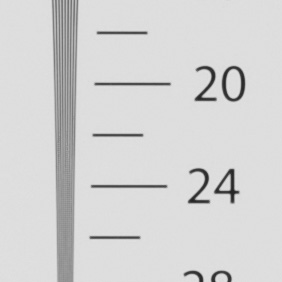 | 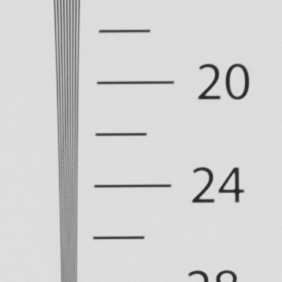 | |
2200 lpph, 50mm f1.8 at f8, 100 ISO |
2200 lpph, DX 18-70mm at 35mm, f8, 100 ISO | |
Canon EOS-400D / Rebel XTi with EF-S 18-55mm |
Sony Alpha DSLR-A100 with DT 18-70mm | |
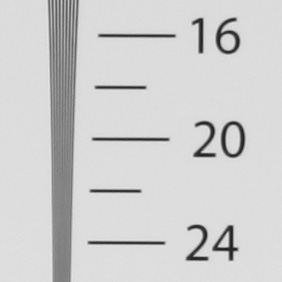 | 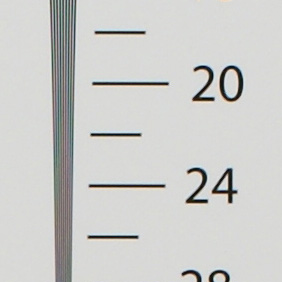 | |
2000 lpph, 18-55mm EF-S at 35mm, f8, 100 ISO |
2150 lpph, DT 18-70mm at 35mm, f8, 100 ISO |
Nikon D80 with Nikkor 50mm f1.8 |
Nikon D80 with Nikkor DX 18-70mm | |
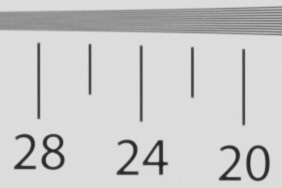 | 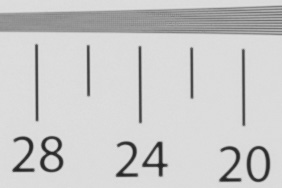 | |
2200 lpph, 50mm f1.8 at f8, 100 ISO |
2200 lpph, DX 18-70mm at 35mm, f8, 100 ISO | |
Canon EOS-400D / Rebel XTi with EF-S 18-55mm |
Sony Alpha DSLR-A100 with DT 18-70mm | |
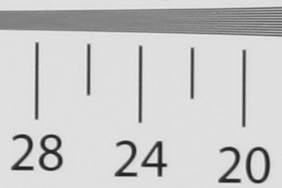 | 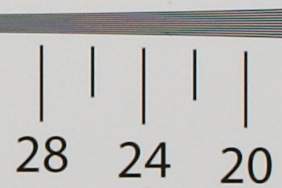 | |
2100 lpph, 18-55mm EF-S at 35mm, f8, 100 ISO |
2150 lpph, DT 18-70mm at 35mm, f8, 100 ISO |




